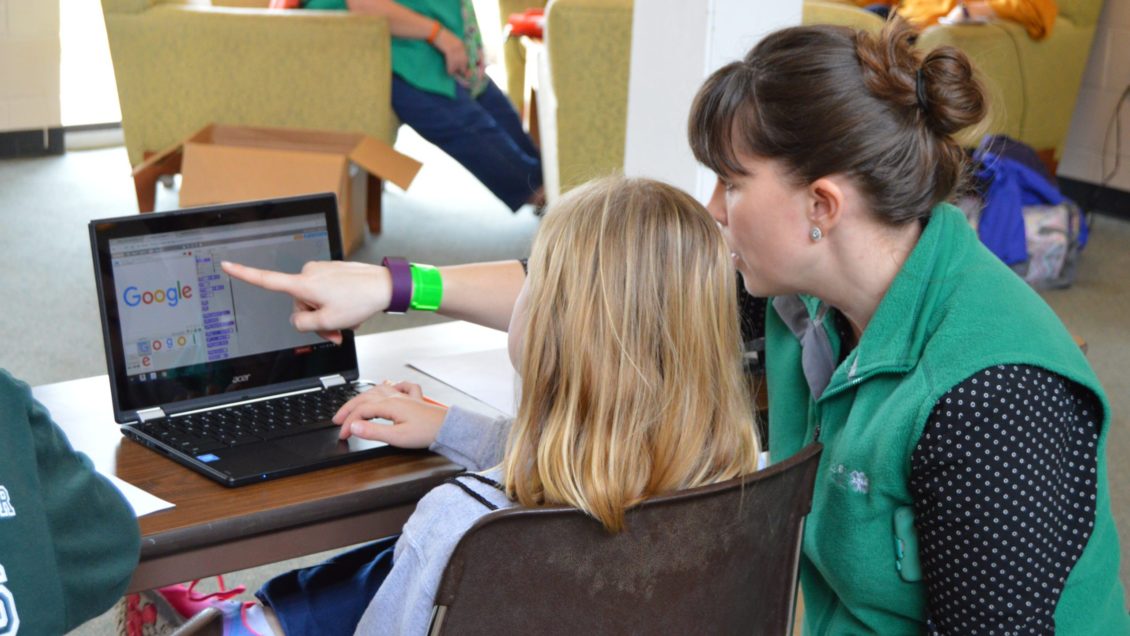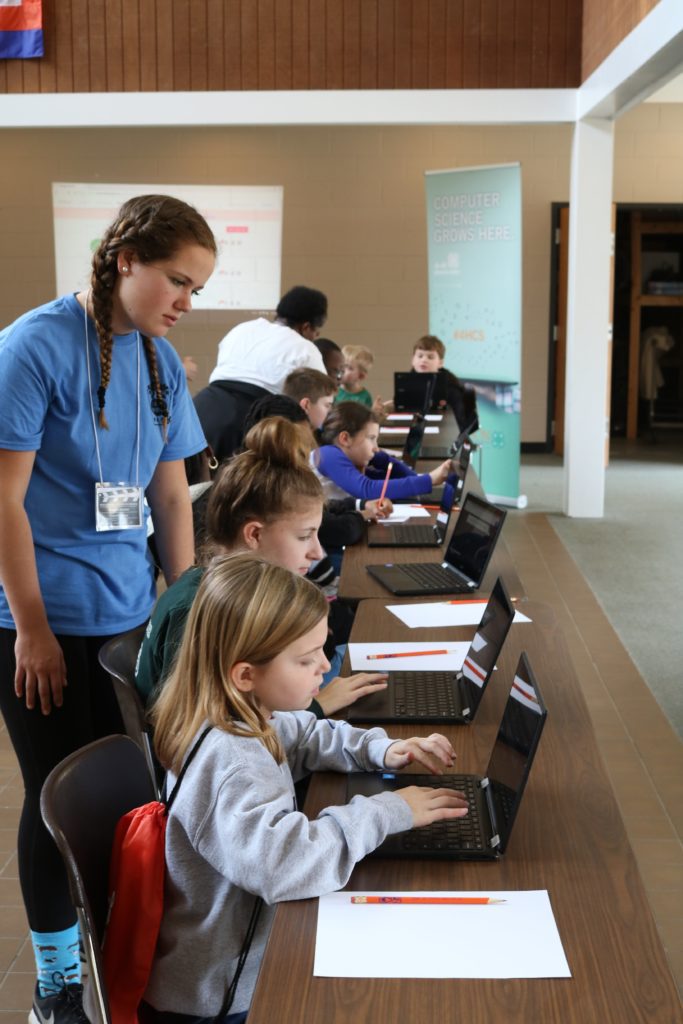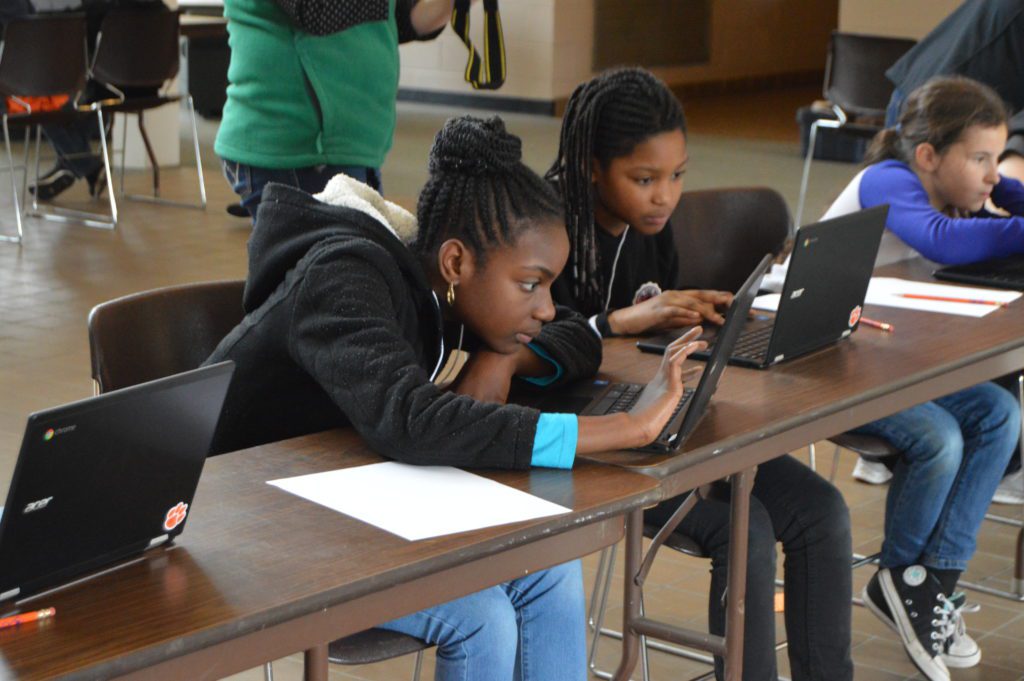
Young people in rural and underserved South Carolina communities can now get connected — to technology, resources and training — thanks to a $5 million grant from Google.org to the National 4-H Council.
The grant is aimed at expanding computer science skills and education to underserved youth across the country and builds upon support from Google.org, which is Google’s philanthropic arm, of computer science in 4-H that has reached 1.4 million students since 2017.
“In South Carolina, we are thrilled to continue to support this great effort and appreciate the opportunity National 4-H Council and Google have provided,” said Ashley Burns, S.C. 4-H Youth Development assistant director.
Computer science (CS) skills are critical to sparking interest in STEM and promoting workforce development skills that all young people need, Burns said.
And S.C. 4-H has a wealth of experience doing just that, with previous and continuing work related to CS and computational thinking skills including the 4-H Journey to Mars program, independent CS activities, professional development and the 4-H Engineering Challenge.

“To date, we have served over 3,000 youth with our programs,” Burns said. “We look forward to making the most of this investment by continuing and expanding CS programming efforts and engaging with the new National 4-H Summit, Clover and PYD Academy experiences.”
With this new funding from Google, 4-H will increase the reach of the Computer Science Career Pathways program for students from rural and under-resourced communities who have had minimal CS education.
The new grant will also help teach young people through Clemson Cooperative Extension’s in-person 4-H programs and online resources. These resources will provide access to computer science education to youth nationwide, including six million 4-H’ers and more than 3,500 educators across the 4-H system anytime and anywhere.
This effort combines the reach and educational expertise of 4-H, the nation’s largest youth development organization, and the power of Google’s computer science knowledge and innovation. Since its start, 1.4 million youth have participated in the program, with 65% living rurally, 56% of teen CS leaders being girls and 47% coming from racially diverse backgrounds.
Despite the demand for high-skilled computer science professionals, opportunities to access this education have been out of reach for youth from rural and other underserved communities, said Jennifer Sirangelo, president and CEO, National 4-H Council.
“We are proud to continue this initiative with help from Google.org to make a real difference in the lives of young people who otherwise wouldn’t be given a chance to discover their interest in computer science. This program goes beyond preparing youth for future careers. Teaching computer science at a young age develops problem-solving skills and confidence, and most important, empowers young people to find their spark and passion that translates to success in life,” she said.
The Code.org Advocacy Coalition’s 2021 State of Computer Science Education report found that while 51% of public high schools in the United States offer computer science, rural schools, urban schools and schools with high percentages of economically disadvantaged students are less likely to offer CS education. Black, Hispanic and Native American students are also less likely to attend schools offering CS courses than white students.
Delivering free computer science education to underserved communities is part of 4-H’s mission to provide equitable access to skills that help young people create opportunity and maximize their potential. The program also offers training and capacity-building for educators, volunteers, professionals and even teen leaders to create their own curricula and reach more youth.
“We believe Google and other companies have a responsibility to help people get the skills they need to get a good job, start a new business, and provide a solid foundation for their families — no matter what their age or where they live,” said Sundar Pichai, CEO of Google & Alphabet. “Computer science education is an important piece of this, and we look forward to working with our partners like 4-H to unleash the talent and drive of millions of people in communities across the US.”

This is the third grant Google.org has made in 4-H’s mission to reach and provide young people with opportunities in computer science education, totaling nearly $14 million since 2017. Google’s support will expand existing and bring new CS education programs to communities across Iowa, North Carolina, Oklahoma, Ohio, Pennsylvania, South Carolina, Virginia, Nebraska, and West Virginia. Read more about the initial grant that established the 4-H CS Pathway across 23 states.
4-H, the nation’s largest youth development organization, grows confident young people who are empowered for life today and prepared for careers tomorrow. 4-H programs empower nearly 6 million young people across the U.S. through experiences that develop critical life skills.
4-H is the youth development program of our nation’s Cooperative Extension System and USDA and serves every county and parish in the U.S. through a network of 110 public universities and more than 3,000 local Extension offices, including all 46 South Carolina counties. Globally, 4-H collaborates with independent programs to empower one million youth in 50 countries.
The research-backed 4-H experience grows young people who are four times more likely to contribute to their communities, twice as likely to make healthier choices, twice as likely to be civically active and twice as likely to participate in STEM programs. Learn more about 4‑H at 4-H.org and follow us on Facebook, Instagram and Twitter.
Get in touch and we will connect you with the author or another expert.
Or email us at news@clemson.edu
